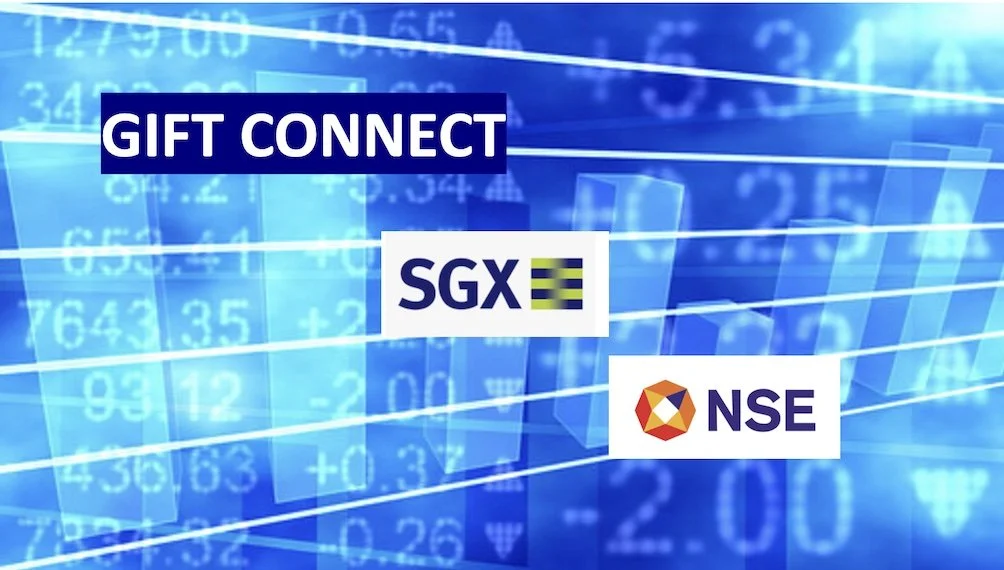A new chapter, a win-win collaboration
Singapore and Indian exchanges are collaborating to deepen liquidity of Indian stock markets
Singapore Stock Exchange’s (SGX) Nifty derivatives products have been renamed GIFT Nifty and listed on India’s NSE International Exchange (NSE IFSE), which is based in the Gujarat International Finance Tech City (GIFT City) of the Gandhinagar State.
The liquidity switch from SGX was completed on 30 June and trading on the NSE IFSE started on 3 July, marking the beginning of a new chapter and the end of several years of legal tussles between the Singapore bourse and its Indian counterpart.
With continuous efforts over the past few decades, Singapore has established itself as a major offshore derivatives trading centre in Asia as well as being a fast-growing wealth management and financial centre. SGX offers some of the most-traded derivative contracts in the region on commodities covering oil, petrochemicals, rubber and others, as well as contracts covering the stock markets, currencies and interest rates of China, India, Indonesia, Japan, Philippines, Taiwan and Thailand.
The feud between the two Southeast Asian bourses began in 2018 when SGX developed derivatives products based on India’s Nifty 50 Index, which tracks the 50 largest companies representing about 65% of the free float market capitalisation of the stocks listed on the NSE. These contracts have quickly become popular instruments for foreign investors to take a bet on the Indian markets without having to open an account in the country.
Nifty futures volumes in Singapore are 80% higher than those in the Indian domestic market. The use of US dollars for transactions without currency risk exposure, as well as Singapore’s more favourable tax regime and less rigid compliance requirements make them attractive to foreign investors.
And since the Singapore derivatives market starts trading before India markets open (SGT is 2.5 hours ahead of IST), the SGX Nifty contracts allow investors to make pre-market moves and provide cues on how the Indian markets will open.
Unhappy that the SGX’s Nifty products kept liquidity of foreign investors offshore with little benefit to the local market, NSE stopped providing data feeds to foreign exchanges and obtained an injunction against SGX from Bombay’s high court.
Both bourses were locked in arbitration proceedings. After rounds of negotiations, the two parties signed an agreement in September 2020 for creating a new cross-border trading link called NSE IFSC-SGX Connect (the GIFT Connect) to provide a new pathway for collaboration.
Under the GIFT Connect arrangement, SGX members’ orders on US dollar-denominated Nifty contracts are routed to NSE IFSC for trade matching and execution, and then cleared on the two bourses’ derivatives clearing houses simultaneously. SGX’s derivatives clearing house continues to act as a central counterparty for SGX clearing members based on well-established risk management and clearing standards that they are familiar with.
Moreover, international investors can continue to trade these contracts 16 hours a day through SGX covering Asian, European and US time zones, operating from 6:30 AM to 11:30 PM IST.
Thus, all tax and operational benefits that traders of SGX Nifty previously enjoyed remain the same after migration to NSE IFSC.
But most importantly, the new platform brings international and onshore GIFT participants together to create a deeper liquidity pool for Nifty products, which in turn will attract more investments and boost the financial ecosystem in the GIFT IFSC.
This collaboration is a win-win to both parties, allowing SGX to continue servicing its clients in managing their risk exposure to the Indian markets, and at the same time helping the GIFT City to establish itself as a hub for international investments.
India has been making significant strides in aligning its stock markets with global standards and practices including various digitalisation initiatives and the successful conversion to T+1 settlement. This collaboration between NSE and SGX is another step in the right direction.
*This article was published in Global Custodian’s July newsletter under the same title.


